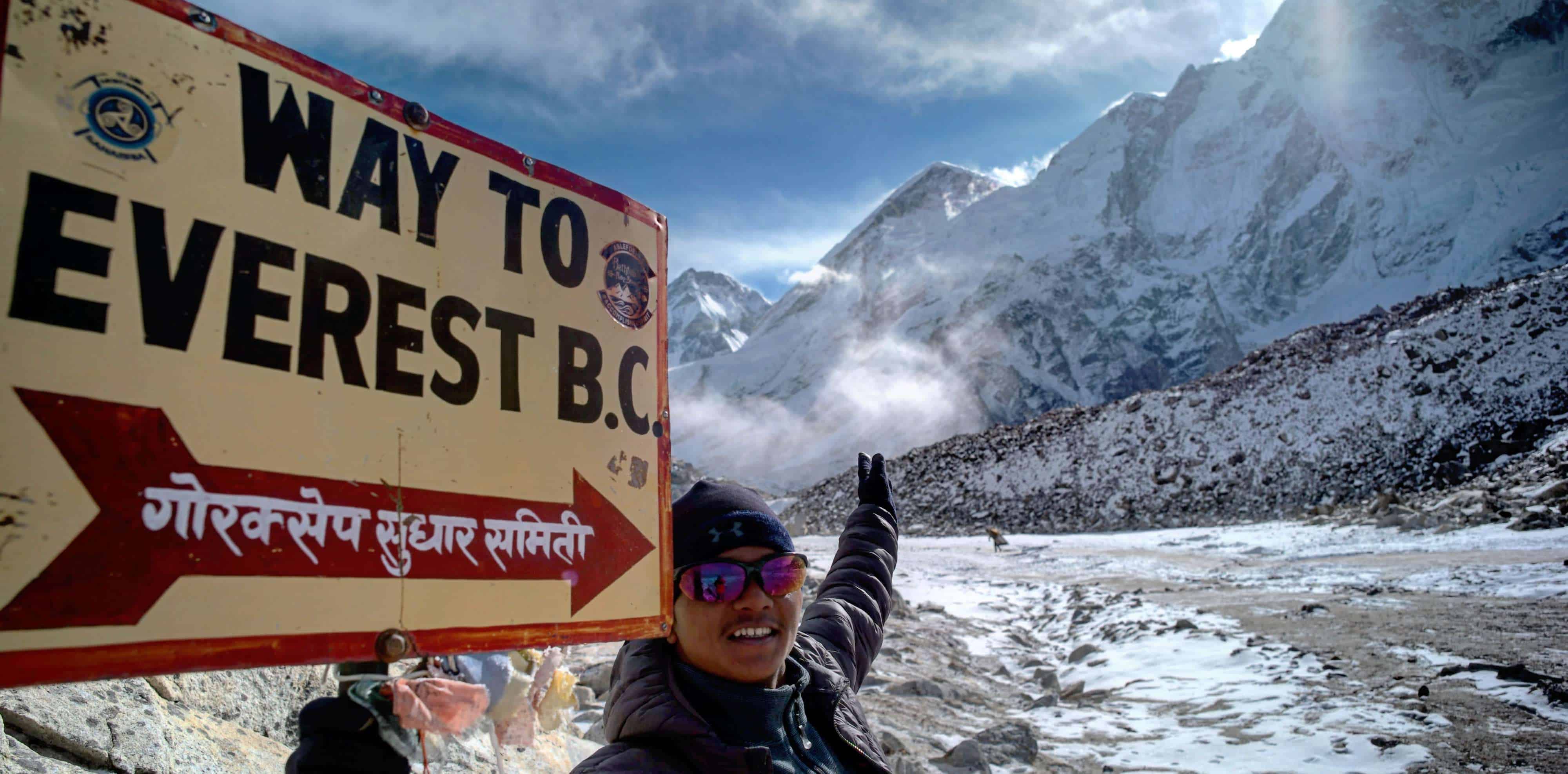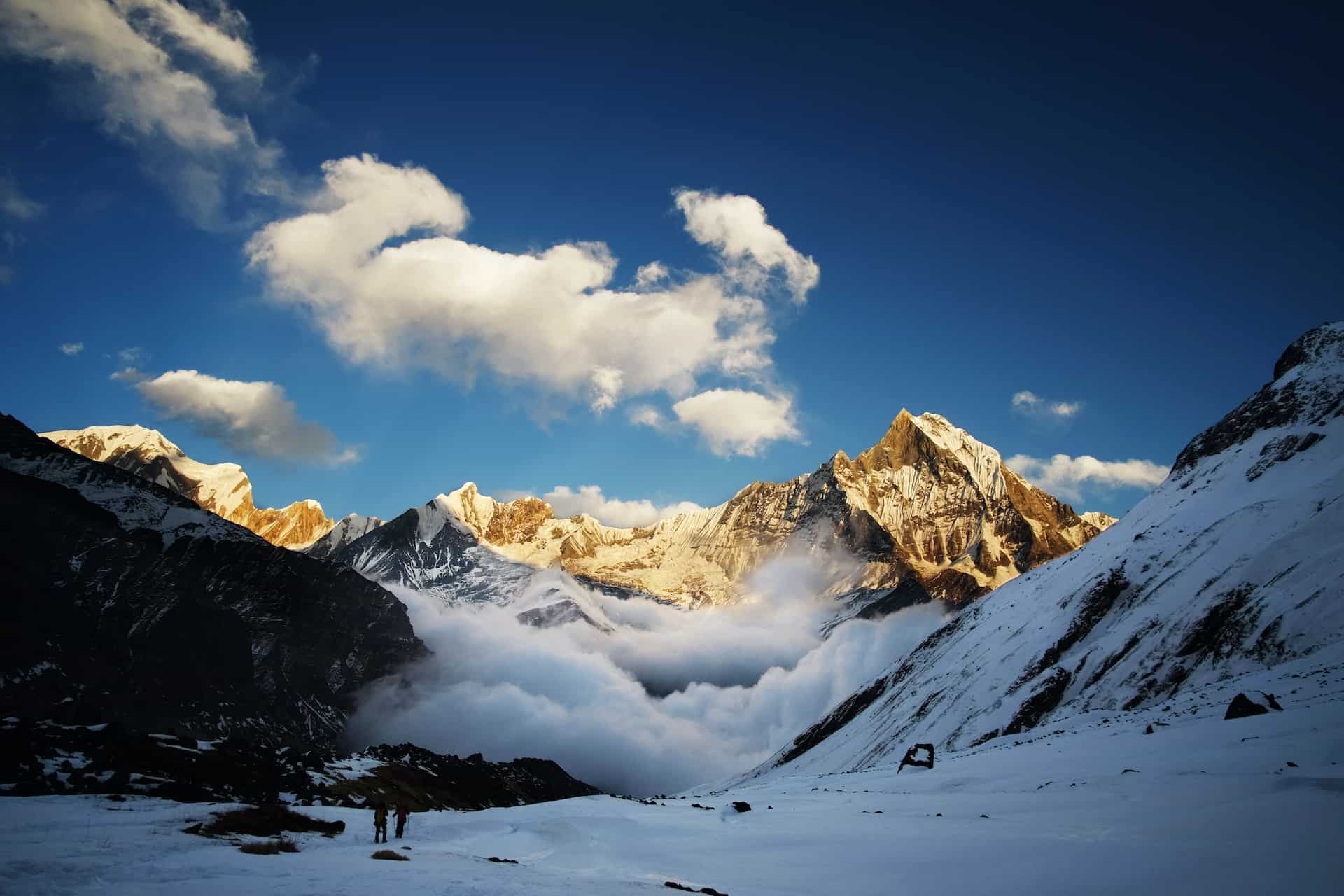19th Jul, 2022
Best Time For Everest Base Camp Trek
The Everest Base Camp Trek, located in the beautiful Solukhumbu District of Nepal, is one of the most breathtaking treks available to the public today. The trip takes you on an adventure through one of the most unforgiving terrains in the world and provides you with an opportunity to come face-to-face with Mother Nature at her best and worst. When planning your trek, it’s important to consider everything from when to go to how much weight you should be carrying, so here are some tips to help you plan your trek perfectly.
Table of Contents
When is the best time of year to go in 2023/2024?
The Best Time For Everest Base Camp Trek is the autumn season, from late September to early November. This time of year is the busiest season in Nepal and the Autumn or Fall season elsewhere. During these months, the weather is generally at its best with clear blue skies and fresh mountain air. The mornings are cool and crisp while the afternoons are warm enough for hiking. However, note that after October 30th when people are still out celebrating Dashain.
Before your trip
Planning and preparation are critical for a successful Everest Base Camp trek. It’s important to know what gear, clothing, and food you will need. You’ll also want to be aware of weather conditions, especially during certain times of the year. Additionally, it’s important that your health is in tip-top shape before a strenuous trek like this one—this means getting enough rest and doing proper exercise at least one month before your trip date! Be sure to visit your doctor if there is any doubt about whether or not you should be heading up the world’s highest mountain.
On your trek
When hiking in and around Everest, expect several stages of altitude sickness: headaches, nausea, and loss of appetite that usually hits at around 5,000m. This is a temporary condition but must be taken seriously because it can quickly turn into something much more serious: high-altitude pulmonary oedema (HAPE) or high-altitude cerebral oedema (HACE). The good news is that these conditions are treatable if caught early enough. Experts recommend ascending no more than 100m per day, starting with lower altitudes. You should also acclimatize slowly before attempting the Everest Base Camp trek. Remember that all medications, while generally safe for healthy adults, may have side effects and should only be used under medical supervision.
Tips for a successful trek in 2023/2024
If trekking in high altitudes isn’t something that comes naturally, check out a few tips before setting off. And remember, trekking is not a race—take your time and enjoy your surroundings. The real reward is getting there. Don’t let altitude sickness slow you down: While everyone reacts differently to high altitude, there are things you can do beforehand to better prepare yourself for long treks. Start taking in lots of carbohydrates and fluids about a week before departure, as well as staying hydrated throughout your journey by stopping at every checkpoint along your trek for water refills or popsicles from locals.
Preparation is key
To make your trek safe and fun, you must prepare yourself. A lot of it comes down to getting into good physical shape and packing for your trip. While some health conditions may make base camp treks not ideal, in general, anyone can do it as long as they prepare themselves properly. With proper preparation and knowledge, you will be able to maximize both your enjoyment and safety during your trek with us. Here is some information about preparing for an Everest Base Camp Trek 2023/2024!
Day-by-day itinerary suggestions
See our itinerary for details about suggested travel days, which will help make your trek more relaxed and enjoyable. You can also click on each day’s image below for detailed information about that day of travel. Keep in mind that your pace may vary from those we suggest: A fast walker might be able to complete in 9 days, while a slower person may take 12 days or more; group size also plays a role here—if you’re with people who prefer a leisurely pace and frequent breaks, expect your average speed to drop by 20-30%. Be sure not to overload yourself with luggage as well; consider whether you need all that gear!
Things to know before going on an Everest base camp trek
First, it’s important to note that Everest base camp treks are only possible during certain times of the year. While climbing Everest is possible any time of year, EBC trekking is most popular from March to October. Outside of those months, heavy snowfall makes travel on foot nearly impossible (more on that later). It’s also important to note that while many tourists take an Everest base camp trek during their visit to Nepal, they often aren’t equipped for such a trek – at least not well enough. People new to hiking or with a lack of experience should prepare carefully before attempting an EBC trek. Proper preparation can mean the difference between having an incredible experience and facing serious complications or even death in severe conditions.
How much will it cost you?
Just as we said before, your budget is everything. We want you to know that when it comes to trekking costs in Nepal, everyone has different needs. But at least you can plan around these figures so it will be a matter of deciding which one fits you. Although prices may differ from agency to agency, here are some estimates for treks: Everest Base Camp Trek costs around $999; Annapurna Circuit costs around $839; Manaslu Circuit about $850 per person for 14 days and Ghorepani Poon Hill about $465 per person for 9 days. All prices are based on a group of two or more trekkers.
Packing list
It’s a good idea to include everything you will need for trekking in your Packing list. Start with clothing, trekking gear, and any medications or personal care items (soap, toothpaste, lip balm). Make sure that every member of your party has a complete set of warm clothing including hats, gloves, and scarves. As soon as winter starts giving way to spring in northern Nepal it can get very cold at night—so bring extra warm clothes. Also, include first aid supplies such as painkillers and bandages.
Safety tips while in Nepal
It’s a common misconception that Nepal is a dangerous country, but it’s not. Nepal has far fewer safety issues than many countries in Europe and North America. Still, it pays to take proper precautions while travelling there. Here are some basic safety tips: Keep personal items (i.e., passports) in your front pocket instead of backpacks or bags. Never leave items unattended, even for a few minutes (consider locking them up in hotel safes). When going out for drinks at night, stick with women-only restaurants or bars; remember that Nepali women never walk alone at night outside of their homes and avoid walking alone yourself if possible as well.
Recent From Best Time For Everest Base Camp Trek

Jun 27, 2022

Jun 27, 2022

Sep 20, 2022

Jan 03, 2023

Feb 03, 2023

Feb 17, 2023

Feb 23, 2023

Mar 03, 2023

Mar 14, 2023
Mar 20, 2023

Mar 28, 2023

Apr 06, 2023

Jul 31, 2023



